Financial News
Gilead Sciences (NASDAQ:GILD) Beats Q2 Sales Targets

Biopharmaceutical company Gilead Sciences (NASDAQ: GILD) reported Q2 CY2025 results topping the market’s revenue expectations, with sales up 1.8% year on year to $7.08 billion. On the other hand, the company’s full-year revenue guidance of $28.5 billion at the midpoint came in 0.8% below analysts’ estimates. Its non-GAAP profit of $2.01 per share was 2.7% above analysts’ consensus estimates.
Is now the time to buy Gilead Sciences? Find out by accessing our full research report, it’s free.
Gilead Sciences (GILD) Q2 CY2025 Highlights:
- Revenue: $7.08 billion vs analyst estimates of $7.00 billion (1.8% year-on-year growth, 1.1% beat)
- Adjusted EPS: $2.01 vs analyst estimates of $1.96 (2.7% beat)
- Adjusted Operating Income: $3.29 billion vs analyst estimates of $3.24 billion (46.5% margin, 1.6% beat)
- The company slightly lifted its revenue guidance for the full year to $28.5 billion at the midpoint from $28.4 billion
- Management raised its full-year Adjusted EPS guidance to $8.10 at the midpoint, a 2.5% increase
- Operating Margin: 34.9%, down from 38% in the same quarter last year
- Free Cash Flow Margin: 10.2%, down from 17.2% in the same quarter last year
- Market Capitalization: $137.2 billion
Company Overview
From its groundbreaking work in developing the first single-tablet regimens for HIV treatment, Gilead Sciences (NASDAQ: GILD) develops and markets innovative medicines for life-threatening diseases including HIV, viral hepatitis, COVID-19, and cancer.
Revenue Growth
A company’s long-term performance is an indicator of its overall quality. Any business can put up a good quarter or two, but many enduring ones grow for years. Over the last five years, Gilead Sciences grew its sales at a mediocre 5.4% compounded annual growth rate. This wasn’t a great result compared to the rest of the healthcare sector, but there are still things to like about Gilead Sciences.
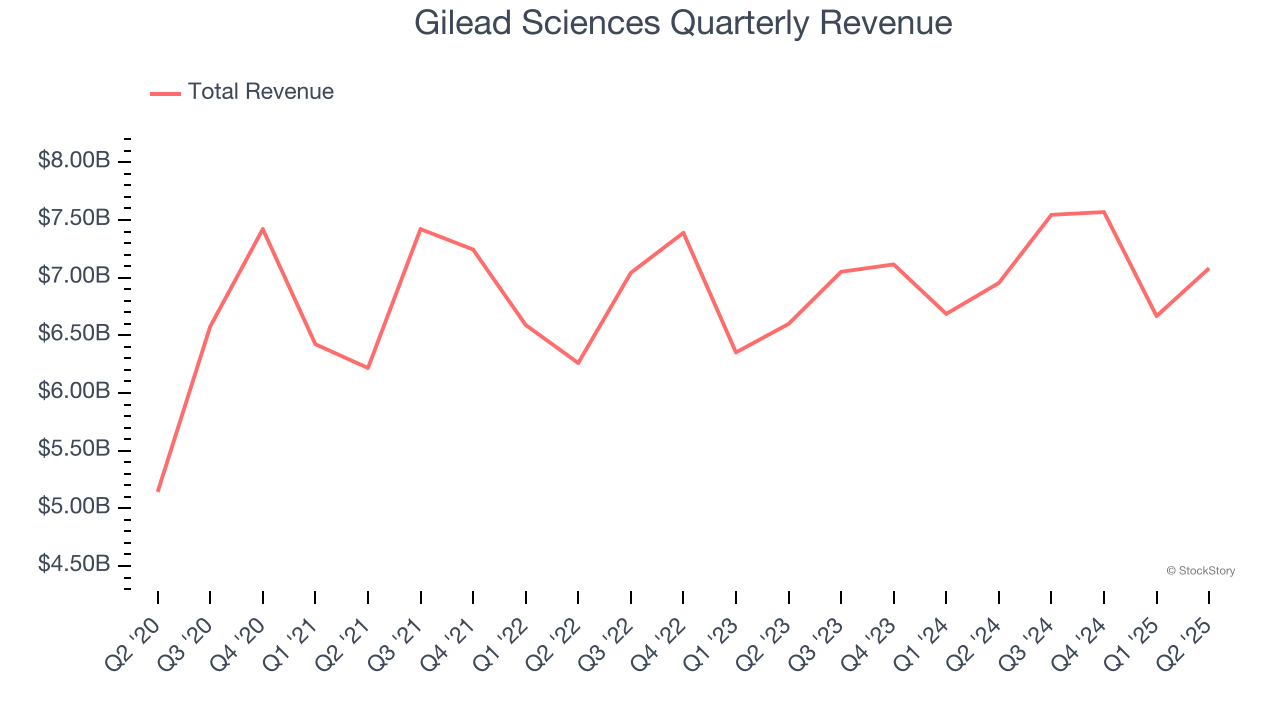
We at StockStory place the most emphasis on long-term growth, but within healthcare, a half-decade historical view may miss recent innovations or disruptive industry trends. Gilead Sciences’s recent performance shows its demand has slowed as its annualized revenue growth of 2.7% over the last two years was below its five-year trend. 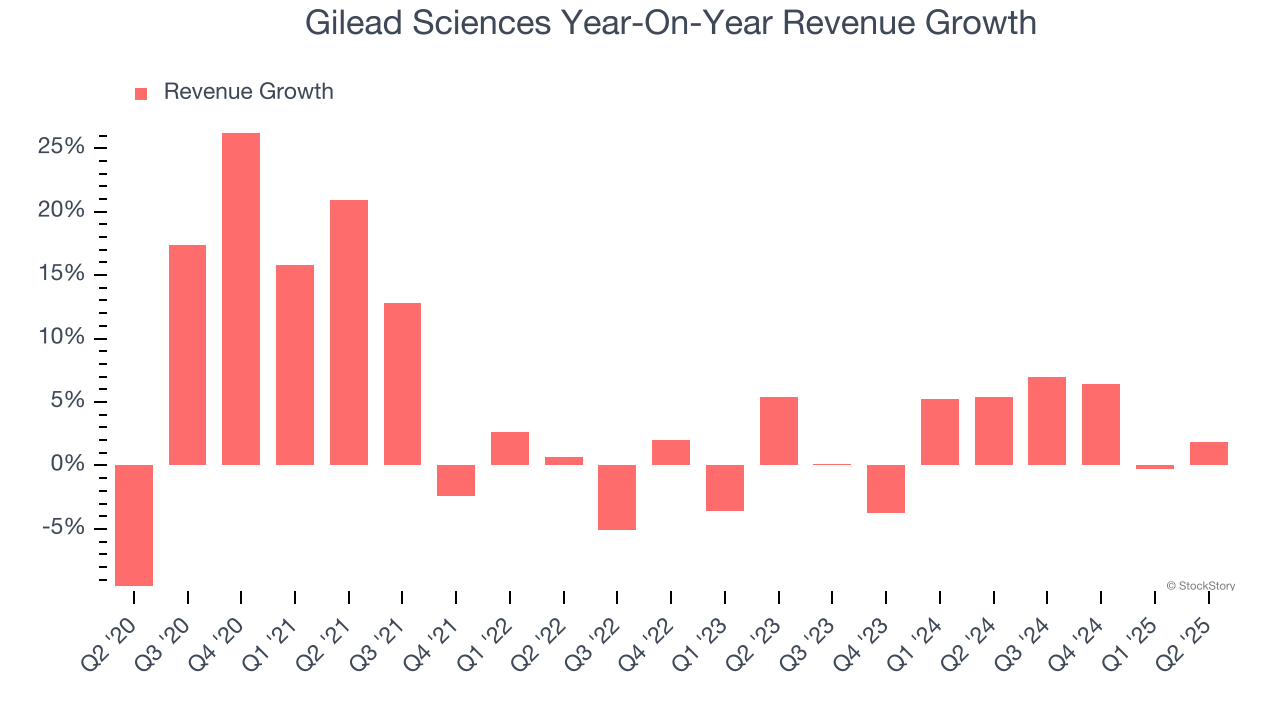
Gilead Sciences also breaks out the revenue for its most important segment, HIV. Over the last two years, Gilead Sciences’s HIV revenue averaged 1.9% year-on-year growth. This segment has lagged the company’s overall sales. 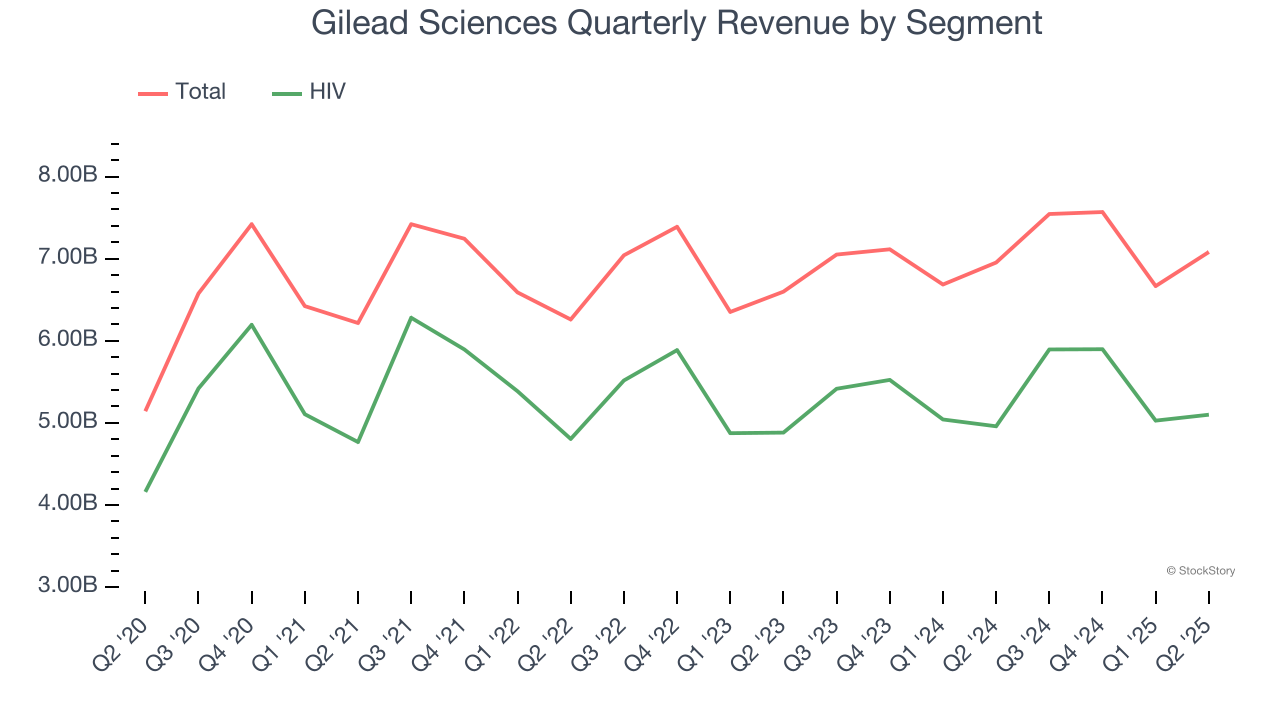
This quarter, Gilead Sciences reported modest year-on-year revenue growth of 1.8% but beat Wall Street’s estimates by 1.1%.
Looking ahead, sell-side analysts expect revenue to grow 2.3% over the next 12 months, similar to its two-year rate. This projection doesn't excite us and implies its newer products and services will not lead to better top-line performance yet. At least the company is tracking well in other measures of financial health.
Software is eating the world and there is virtually no industry left that has been untouched by it. That drives increasing demand for tools helping software developers do their jobs, whether it be monitoring critical cloud infrastructure, integrating audio and video functionality, or ensuring smooth content streaming. Click here to access a free report on our 3 favorite stocks to play this generational megatrend.
Adjusted Operating Margin
Gilead Sciences has been a well-oiled machine over the last five years. It demonstrated elite profitability for a healthcare business, boasting an average adjusted operating margin of 40.1%.
Looking at the trend in its profitability, Gilead Sciences’s adjusted operating margin decreased by 2.3 percentage points over the last five years, but it rose by 5.1 percentage points on a two-year basis. Still, shareholders will want to see Gilead Sciences become more profitable in the future.
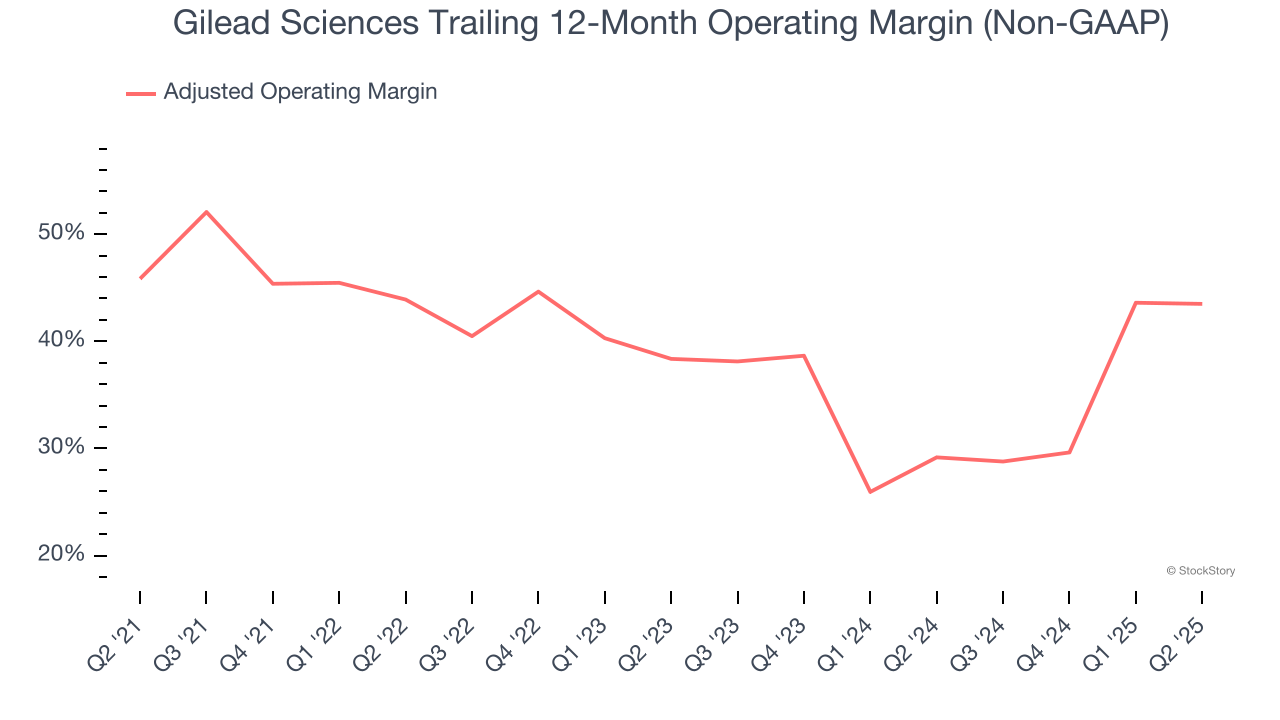
In Q2, Gilead Sciences generated an adjusted operating margin profit margin of 46.5%, in line with the same quarter last year. This indicates the company’s overall cost structure has been relatively stable.
Earnings Per Share
We track the long-term change in earnings per share (EPS) for the same reason as long-term revenue growth. Compared to revenue, however, EPS highlights whether a company’s growth is profitable.
Gilead Sciences’s solid 7.1% annual EPS growth over the last five years aligns with its revenue performance. This tells us its incremental sales were profitable.
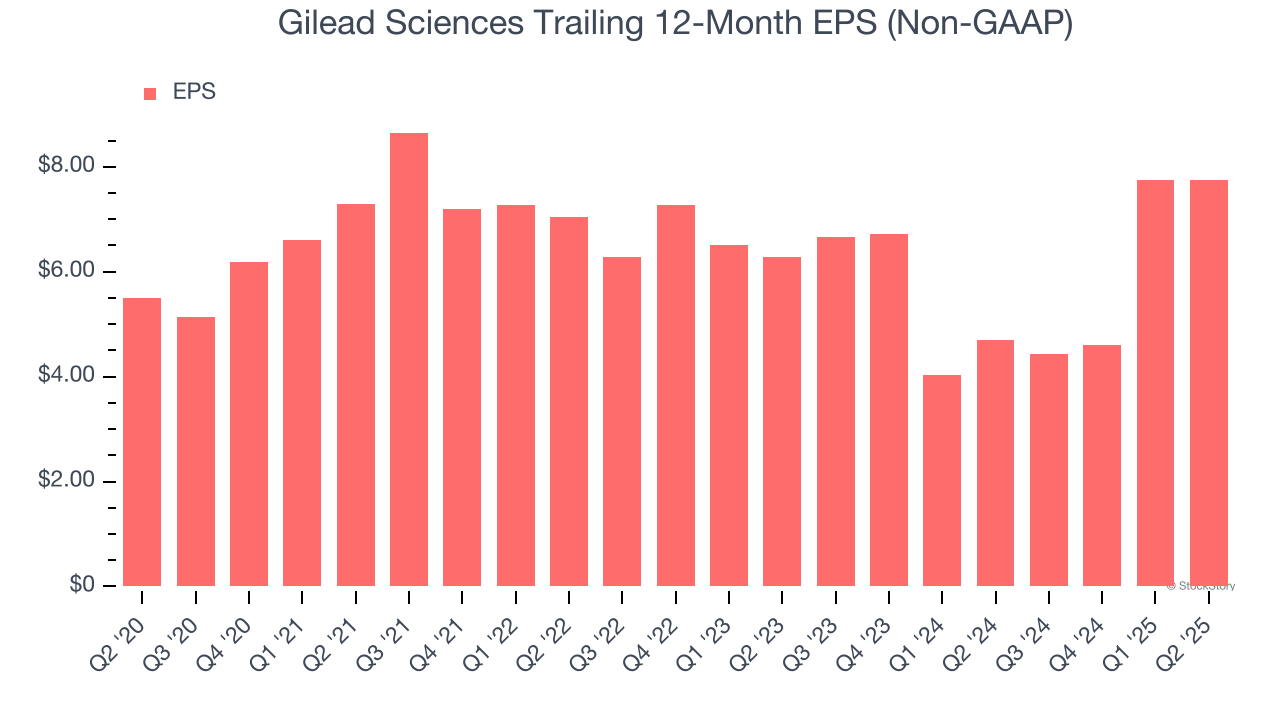
In Q2, Gilead Sciences reported adjusted EPS at $2.01, in line with the same quarter last year. This print beat analysts’ estimates by 2.7%. Over the next 12 months, Wall Street expects Gilead Sciences’s full-year EPS of $7.74 to grow 7.2%.
Key Takeaways from Gilead Sciences’s Q2 Results
It was good to see Gilead Sciences narrowly top analysts’ full-year EPS guidance expectations this quarter. We were also happy its revenue narrowly outperformed Wall Street’s estimates. On the other hand, its full-year revenue guidance slightly missed. Zooming out, we think this was a mixed quarter. The stock traded up 1.7% to $112.22 immediately following the results.
Should you buy the stock or not? The latest quarter does matter, but not nearly as much as longer-term fundamentals and valuation, when deciding if the stock is a buy. We cover that in our actionable full research report which you can read here, it’s free.
More News
View More





Quotes delayed at least 20 minutes.
By accessing this page, you agree to the following
Privacy Policy and Terms Of Service.



